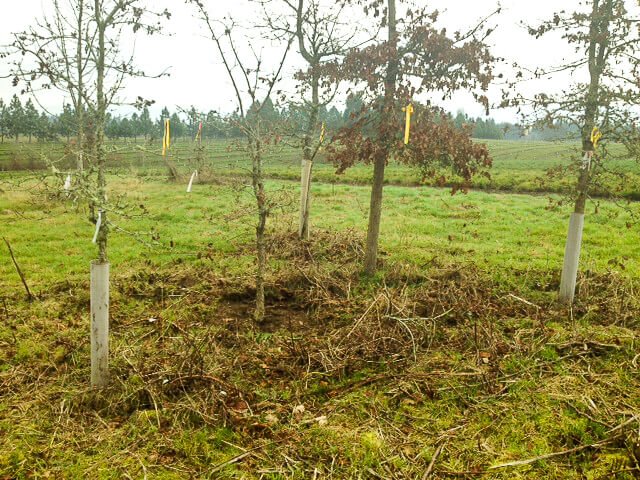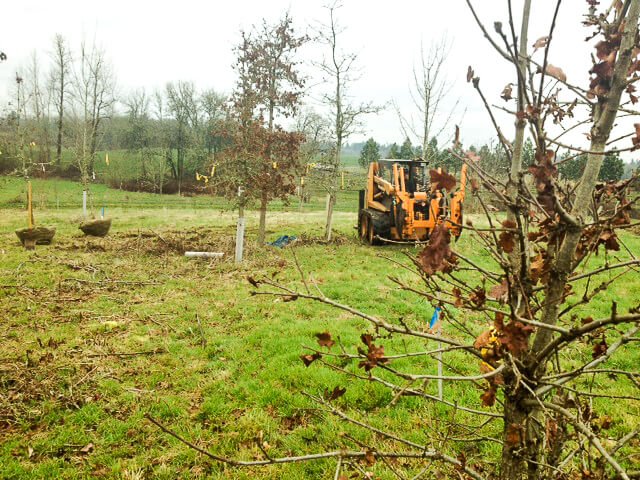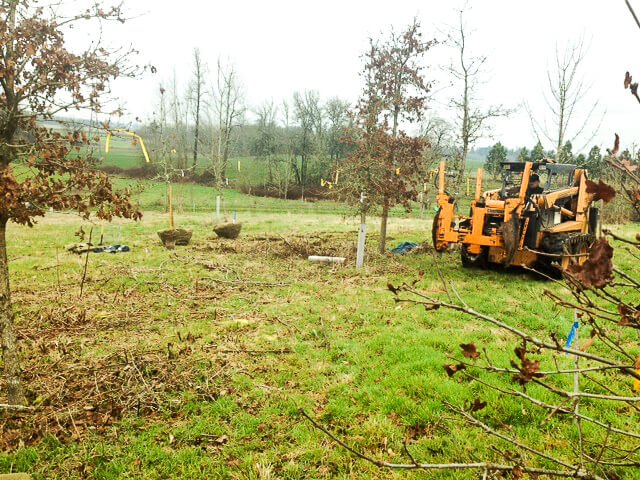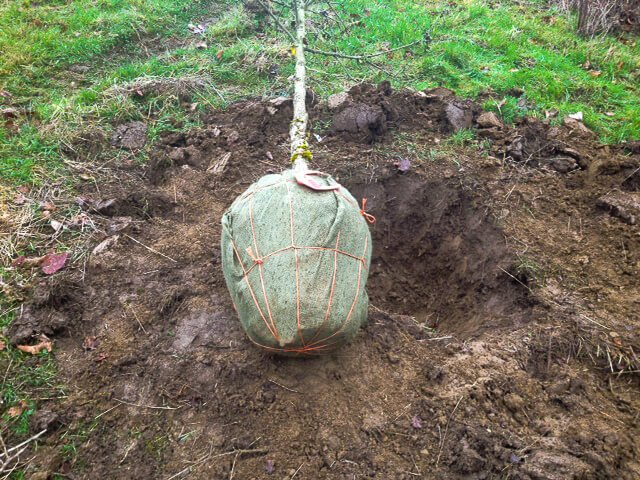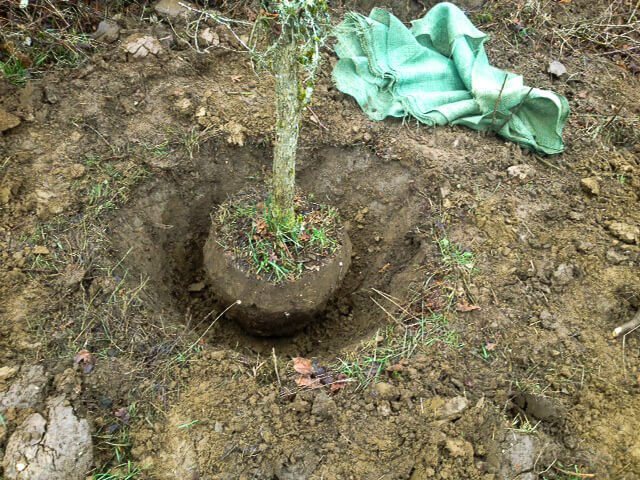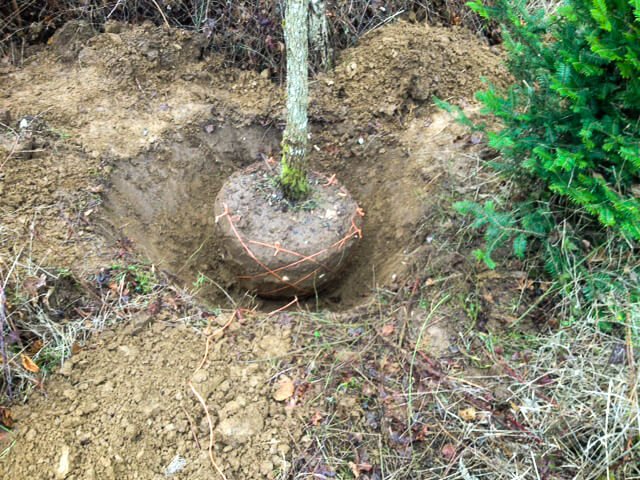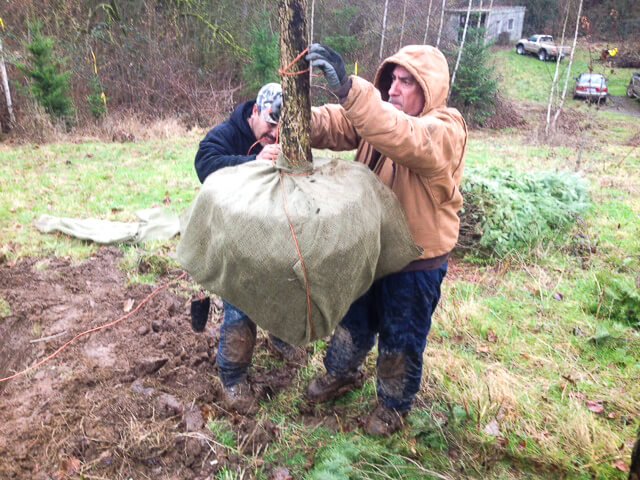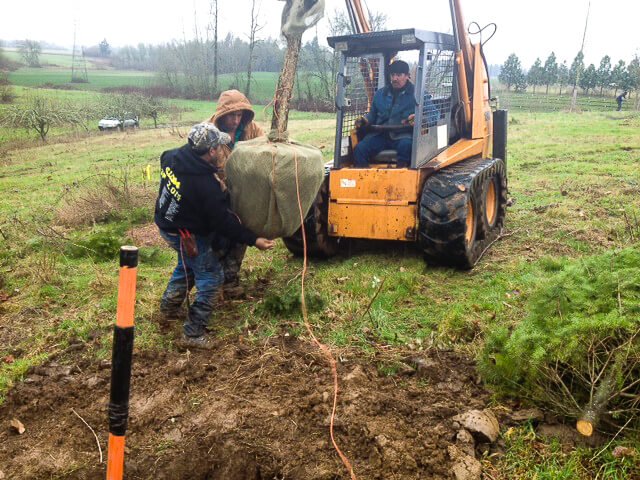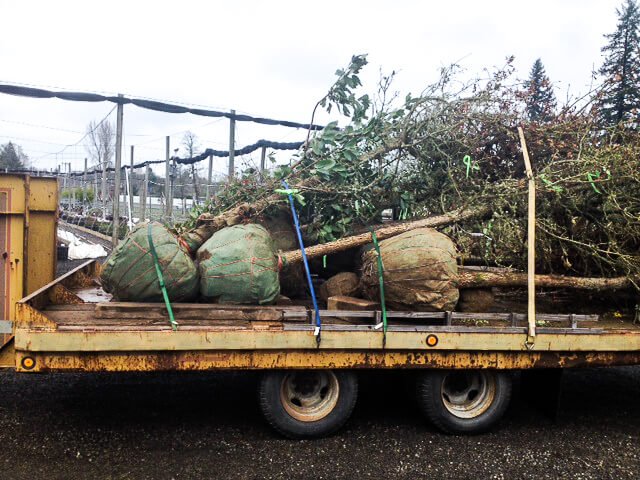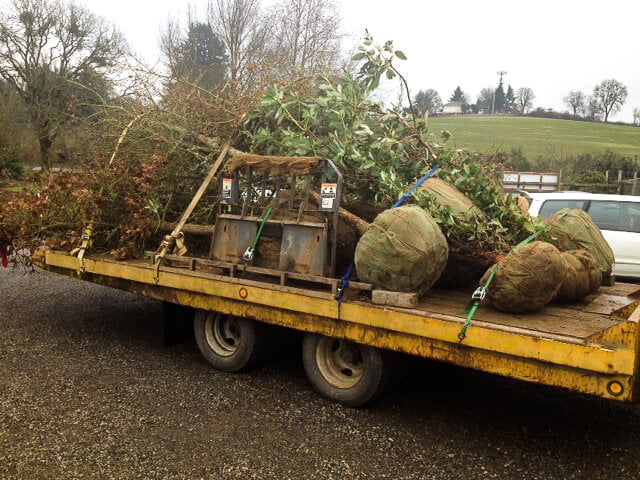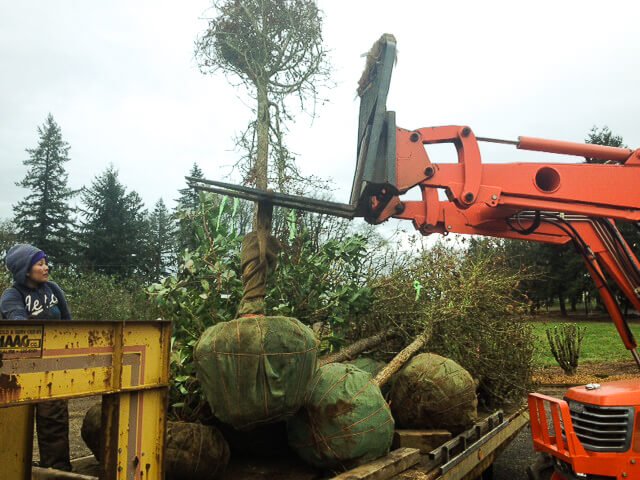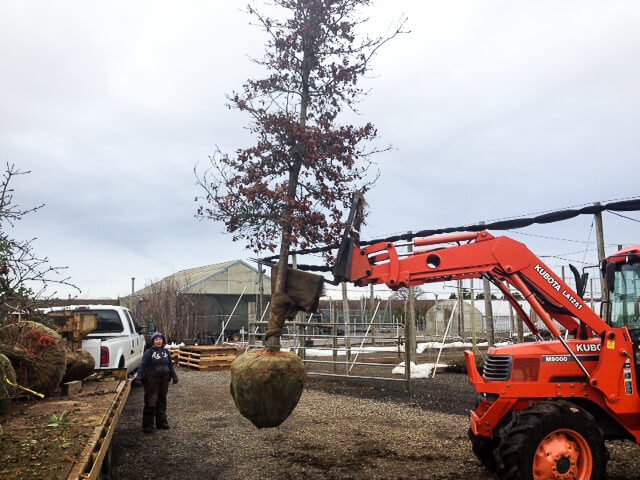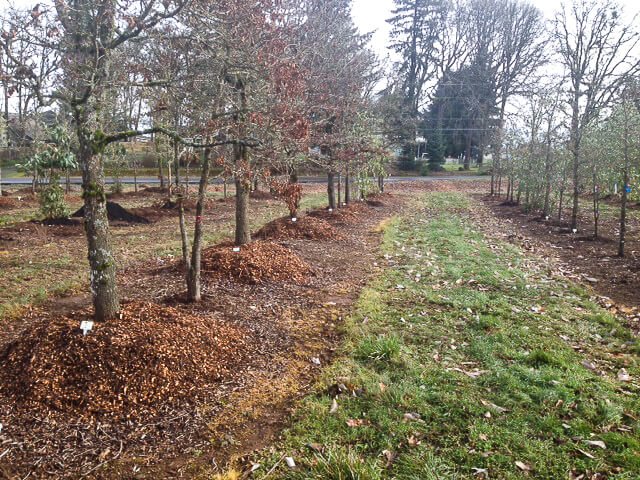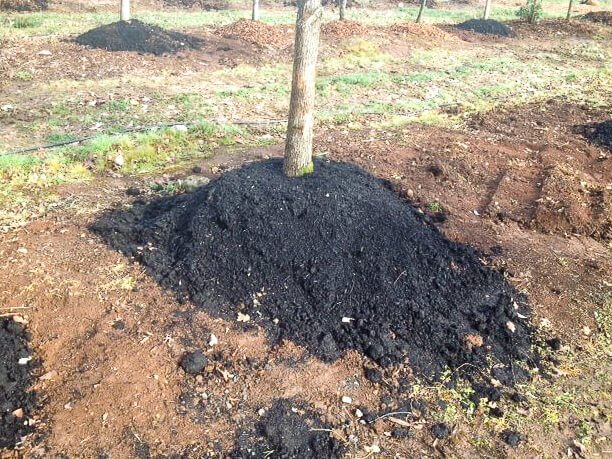Rescuing Quercus Garryana
A Mahonia Nursery Sustainable Tradition
Mahonia Nursery is strongly committed to sustainability. For us, sustainability includes rescuing native oak trees that are destined for destruction because of development projects or the trees’ interference with existing structures. A healthy Oregon white oak has the potential to live at least 300 years. Rescuing oaks can help ensure they reach their full potential. When handled properly a rescued oak tree has a 90% chance to continue to thrive for many decades to come, providing valuable habitat for the threatened western gray squirrel and many varieties of birds including nuthatches, dark-eyed juncos, acorn pileated woodpeckers and goldfinches. In the second year after a rescued tree has been established in Mahonia Nursery, it is ready to be ‘adopted’ by those who are committed to cultivating Oregon’s natural heritage.
Trees with less than a 10 inch diameter trunk are perfect candidates for a successful rescue. Oaks must be transplanted during their dormant season to enable their survival. If you know of a tree that needs rescue, or if you are interested in adopting an Oregon white oak, please see our availability list and contact Mahonia Nursery with your questions. We will be happy to help.

